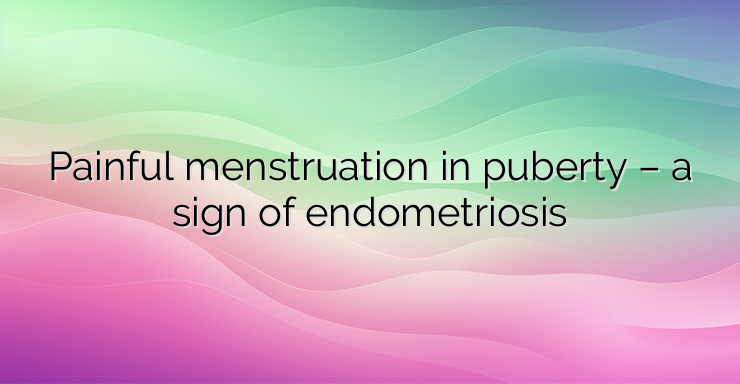In some girls, severe pain during the monthly menstrual cycle is a signal of an increased risk of developing an extensive form of endometriosis, according to the preliminary data of a scientific study. In the study of scientists from the Descartes University in Paris, 229 women who underwent surgery for endometriosis were included. in which French scientists found that the most extensive form, known as infiltrating endometriosis (DIE), was associated with frequent complaints of painful menstruation in the teenage years. These women are four times more likely to require hormone therapy before the age of 18. The results of the study, published in the journal Fertility and Sterility, show that the presence of dysmenorrhea in puberty can be considered a sign of risk of developing of infiltrating endometriosis at a later age. In endometriosis, growth of the lining of the uterus in other organs such as ovaries, fallopian tubes or other organs of the small pelvis is observed. The characteristic of this type of tissue is that it is formed on the inside of the uterus after the second half of the cycle and falls away in the absence of pregnancy, a phenomenon that is defined as menstruation. When the endometrial mucosa spreads to other organs, adhesion or damage to the local the tissues. This is often the cause of difficulty in wanting to get pregnant. The process is accompanied by pain in the lower abdomen, heaviness, painful uterine cramps during menstruation. In women with infiltrating endometriosis, multiple adhesions are found in the organs located in the pelvis, including the vagina, bladder, intestines. There are three forms of endometriosis: superficial, ovarian and infiltrating. It is with the latter that numerous adhesions are observed. A diagnosis of endometriosis is difficult, in most cases years after the girl or woman suffers from the condition. The reasons for the complaints can be mistaken for other conditions such as cysts in the ovaries, problems with the organs in the small pelvis, inflammation in the pelvis, bowel diseases. Examination of the pelvic organs or ultrasound helps to make the diagnosis. Laparoscopy is considered to be the most informative and the only way to make a correct diagnosis. In their research, the team of Dr. Charles Chapron from Descartes University in Paris is trying to find early symptoms that can be associated with the development of endometriosis in patients who have undergone surgery women due to endometriosis. 43% of the 229 women had infiltrating endometriosis. In 58% of them, hormonal therapy was necessary to control menstrual pain. It was also done in 26% of women with other forms of endometriosis. 21% of women with infiltrating endometriosis and 6% of those with another form take the drugs before reaching the age of 18. In women with endometriosis, a family burden with the disease is also found – 13% with infiltrating and 5% with the other forms. It does not exist yet effective therapy to prevent the progression of endometriosis,explains Dr. Chapron. Hormonal therapy, which is used for painful menstruation, does not prevent the development of infiltrating endometriosis, the results of the study so far show, but this does not mean that their prescription is unfounded. Until the reasons for the progression of the disease and the ways in which it can be prevented, early diagnosis of the disease to explain the causes of complaints is essential. Experts recommend that pain during menstruation should not be treated with standard painkillers, but to seek a specialist for a competent assessment of the condition and adequate treatment. In addition to painkillers, therapy for endometriosis includes several types of hormonal drugs aimed at limiting the spread of endometrial tissues in the body.


Leave a Reply